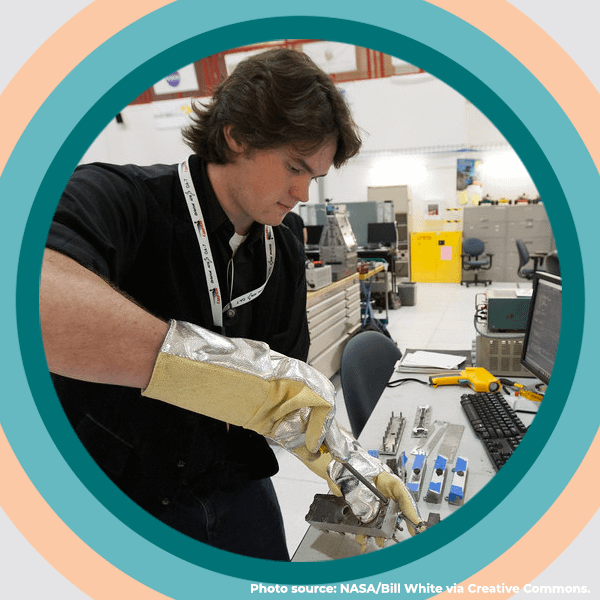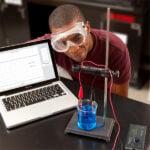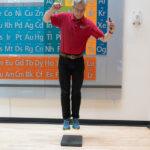
Sharing ideas and inspiration for engagement, inclusion, and excellence in STEM

App developer. Drone operator. Cloud computing specialist. These were some of the careers listed in a 2016 report from the World Economic Forum titled “10 Jobs that Didn’t Exist 10 Years Ago.”
In the same report, the authors wrote that the “pace of change is only going to get faster thanks to rapid advances in the fields of robotics, driverless transport, artificial intelligence, biotechnology, advanced materials, and genomics.”
It bears repeating that this report was published six years ago—think of all the technological and scientific advances we’ve made since then. Now, think about the as-yet-uninvented careers of 2032 that today’s students will eventually have.
It boggles the mind to envision what those jobs will be; the stuff of science fiction novels today may be par for the course 10 years from now. (For some perspective, imagine teaching someone how to develop apps in 2006, the year before the original iPhone was unveiled.)
We can’t predict the jobs of the future. However, we need to prepare students for careers that don’t exist yet—and institutions of higher education play a critical role in this work.
Laying a Foundation with “Soft” Skills
Although it is important to equip students with technical skills (for example, coding), workforce development experts also emphasize so-called soft skills.
Also described as durable or “power” skills, these abilities are the cornerstone for professional success in all fields—including science. According to a survey conducted by the Pew Research Center and Elon University’s Imagining the Internet Center, the most important soft skills for the jobs of the future include
- Process-oriented and system-oriented thinking
- An evidence-based way of looking at the world
- Data-based decision-making
“Students can be trained to be more innovative, creative, and active initiators of novel ideas,” Ben Shneiderman, professor of computer science at the University of Maryland, told the Pew Research Center.
“Skills of writing, speaking, and making videos are important, but fundamental skills of critical thinking, community building, teamwork, deliberation/dialogue, and conflict resolution will be powerful. A mindset of persistence and the necessary passion to succeed are also critical.”
Additionally, in a two-part virtual forum hosted by The Chronicle of Higher Education and sponsored by Adobe, panelists discussed “What Employers Want” and “Preparing for the Upended World of Work.” The major takeaway from both sessions: There is ever-increasing demand “for colleges to help prepare learners for the future workforce by teaching soft or ‘durable’ skills, such as collaboration, communication, and critical thinking.”
Responding to the Fourth Industrial Revolution
Dr. Klaus Schwab, founder and executive chairman of the World Economic Forum, stated in the December 2015 issue of Foreign Affairs that the world was on the cusp of the Fourth Industrial Revolution, which “is characterized by a fusion of technologies that is blurring the lines between the physical, digital, and biological spheres.”
Dr. Schwab also wrote, “When compared with previous industrial revolutions, the Fourth is evolving at an exponential rather than a linear pace. Moreover, it is disrupting almost every industry in every country. And the breadth and depth of these changes herald the transformation of entire systems of production, management, and governance.”
Fast-forward to October 2020, when Mike Belcher, director of EdTech Innovation at HP, participated in a virtual panel hosted by The Chronicle of Higher Education on “The New Shape of Work.”
At this event, Belcher said “STEM is huge right now” in terms of job opportunities during the Fourth Industrial Revolution. He also stressed that colleges need to help students cultivate “essential and foundational skills”—specifically, flexibility and self-reinvention, deep problem-solving skills, and high levels of creativity—to thrive in these careers.
“These are the skills that make us successful in what we do, and when we combine those with technical skills, that’s where we see really great things happening,” Belcher said. “I think this is where we have opportunity for students in the future.”
Bridging the Gap Between Education and Workforce Development
Collaboration is crucial to ensure all postsecondary learners have the skills they need to succeed in the workforce, according to experts such as Dr. Jason Wingard, president of Temple University and co-editor of The Great Skills Gap: Optimizing Talent for the Future of Work.
“As we all learned throughout the pandemic, agility, creativity, and adaptability—along with a growing set of technical skills—are and will remain essential to being a successful worker in the future of work,” Dr. Wingard wrote in a blog post for Stanford University Press.
“It’s critical for institutions of higher education to find ways for young people to lay the foundation for a lifetime of meaningful, engaging work. Through their education, learners must be prepared to meet the immediate requirements of their workplaces, as well as the uncertain demands of the future.”
However, Dr. Wingard also highlighted a gap between higher education and the workforce; according to the results of the Strada-Gallup 2017 College Student Survey, 96 percent of chief academic officers in colleges and universities believe their institution effectively prepares future workers compared with only 11 percent of business leaders.
Education technology companies, such as Vernier, that understand STEM education is paramount to postsecondary success can help close this gap.
We are in a unique position to support institutions of higher learning with tools and resources that will equip today’s students with what they need to thrive in tomorrow’s jobs as technology continuously evolves.
Specifically, by offering education technology solutions that are grounded in a holistic approach to science education, we can help facilitate the development of critical thinking, problem-solving, collaboration, and other soft skills. In the process, we can help set postsecondary learners up for success in their careers—whatever they may be.
For a college student’s perspective on how to prepare for careers that haven’t been invented, check out this blog post.
Share this Article

Sign up for our newsletter
Stay in the loop! Beyond Measure delivers monthly updates on the latest news, ideas, and STEM resources from Vernier.







